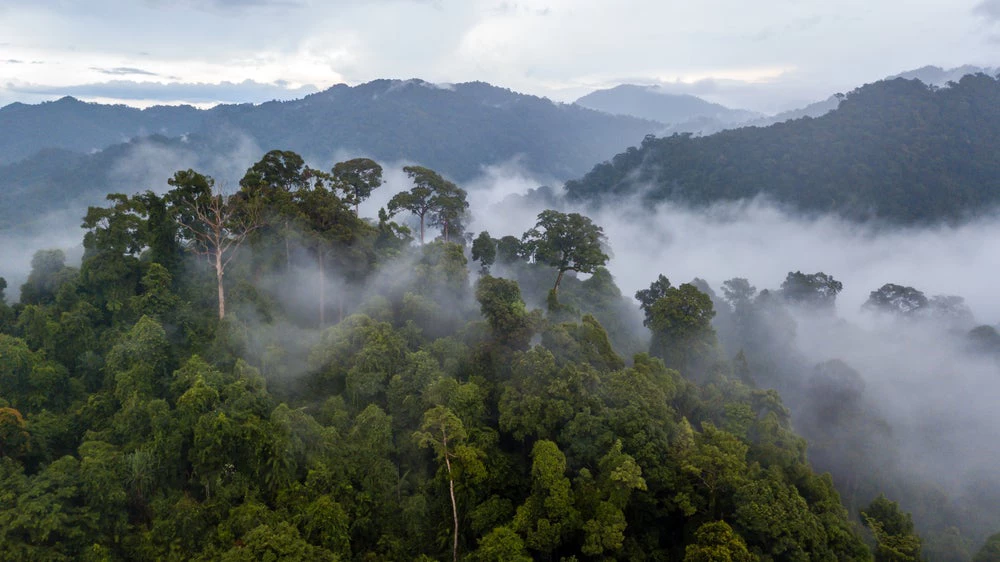 © Richard Whitcombe/Shutterstock
© Richard Whitcombe/Shutterstock
This blog entry is in a series that highlights insights from research for development policies and practice, supported by the Knowledge for Change Program (KCP).
Land use (agriculture and forestry) represents 17% of carbon emissions. Small farms in developing countries are particularly susceptible to climate change and extreme weather conditions. Today, we highlight two pieces of innovative research supported by the KCP that delve into the tricky issue of the economics of forest conservation efforts.
Can we put a price on the Amazon rainforest? And how much are people willing to pay to protect and preserve it? As the world’s largest rainforest, the Amazon is not only home to millions of species of plants and animals, but it also provides vital carbon storage to slow down the pace of global warming. Placing a value on this global public good is essential for planning sustainable Amazon development programs, but valuing the entire Amazon ecosystem is almost impossible because of the prohibitive costs to do so. The study we are about to introduce proposed an efficient way to estimate the Amazon’s global value, which made it possible to quantify the costs and benefits of deforestation and land use programs.
Is there a relationship between wild tiger habitats and interest rates? This is what our researchers tried to find out by examining conservation efforts of tiger habitats in 12 Asian countries. By revealing the relationship between economics and the devastating effects of deforestation, the research lessons we showcase today provide useful tools for policy makers, as they evaluate policy options on land use, sustainable agriculture, and forest conservation programs.
Putting a price on the Amazon forest
15% of the Amazon’s original forest area has already been lost. Would people be willing to pay to reduce or avoid additional losses? That was the question a group of researchers posed in a survey conducted in 2011, reaching more than 200 environmental valuation experts from 36 countries. The researchers asked the experts to predict the willingness to pay for Amazon forest preservation among their own countries’ populations. The survey results showed that the average willingness to pay to protect the current Amazon rainforest until 2050 ranged from a low of $4–36 per household per year in 12 Asian countries to a high of approximately $100 in Canada, Germany, and Norway, with other high-income countries in between these ranges. The European expert judgments indicated a willingness to pay for preserving the current Amazon rainforest of approximately €28 per European household per year on average.
In 2014, with additional support from the KCP, a team launched a follow-up project to map the value of the Amazon forest’s ecosystem services. Their map assigned explicit economic values to all measurable impacts, including food production, raw material provision (rubber and timber), greenhouse gas mitigation, and other economic effects due to climate change. As deforestation of the Amazon surged to a decade-high in 2020, this project provides a useful tool for policy makers to weigh the costs and benefits of various forest-related programs.
Wild tiger habitats and the market variables that affect them: an innovative forecasting model using remote sensing technologies
Are there connections between deforestation and changes in economic and market variables? The answer is a resounding yes! And our researchers demonstrated the link using remote sensing technologies in the context of conservation efforts for tiger habitats in 12 Asian countries. The survival of many wildlife species depends on the conservation of their natural habits in the forests. Deforestation is one of the biggest issues in global land use and threatens wildlife populations. However, identifying deforestation is not easy, because such areas are constantly evolving, particularly in response to changing economic and environmental conditions.
Research on tiger habitat conservation (conducted in 2011–2015) developed an innovative forecasting model, using a high-resolution remote-sensing database, and pinpointed the most endangered areas in tiger habitats in 12 Asian countries. Researchers found that deforestation in all the tiger habitat countries was affected by economic variables, explained in this blog. In particular, changes in the markets for world forest products, and national financial policies had significant, measurable effects on deforestation. But there are also considerable differences in sensitivity to these influences across countries. In the export-oriented economies of Indonesia and Malaysia, deforestation is highly sensitive to changes in exchange rates, real interest rates, and the prices of forest products. In contrast, countries such as India, Bangladesh, and Nepal show significantly lower sensitivities to these variables.
These two pieces of forest-related research remind us of the importance of further examinations into sustainable land use and agriculture policies and practices. Our researchers and data scientists are pushing the frontier of research in this domain, including studies on sustainable land management practices, sustainable irrigation infrastructure, mangroves and dependent livelihoods, and survey methods for measuring adaptation and mitigation strategies, etc. More broadly, current and future research projects are looking into i) the linkage of urbanization and mobility such as transportation decarbonization and the climate and migration nexus, ii) energy policy and markets, such as pricing off-grid vs. grid expansion policies, clean energy technologies, and optimization and modeling tools to develop the least-cost electrification plans, as well as iii) governance, regulation and climate policy, including carbon pricing and machine learning based projections of deforestation, pollution and carbon outputs along with economic growth trajectories using geospatial data. The list goes on. We invite more researchers, data scientists, and policy analysts interested in climate change related issues to join us to pioneer new ideas!
The authors would like to acknowledge contributions from the following projects under the guidance of task team leads (TTLs) and researchers: Economic Valuation of Losses due to “Amazon Dieback” and Economy-wide Valuation of Local/Regional Ecosystem Services from Amazon Forest (TTL: Michael Toman); Mobilizing Spatial Economics and Information for Tiger Habitat Conservation (TTL: Susmita Dasgupta);
About the blog series: The Knowledge for Change Program (KCP) has launched a blog series to retrospectively highlight a selection of research projects conducted over the past 20 years, many of which still remain highly relevant and have great lessons for development policies and practices today. Managed by the Development Economics Vice Presidency of the World Bank (DEC), the KCP aims at promoting evidence-based policy making through research, data and analytics. To celebrate the launch of the KCP’s fourth phase, this blog series will look into the wealth of knowledge researchers have generated in KCP’s previous phases, distill lessons learned, and inspire discussions on future research directions.




Join the Conversation